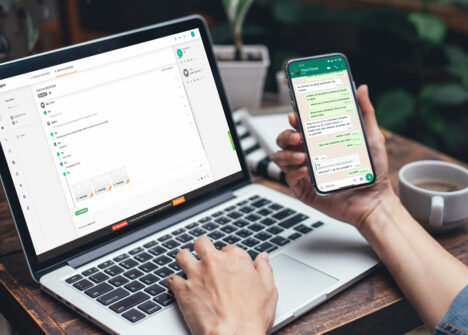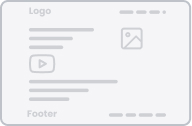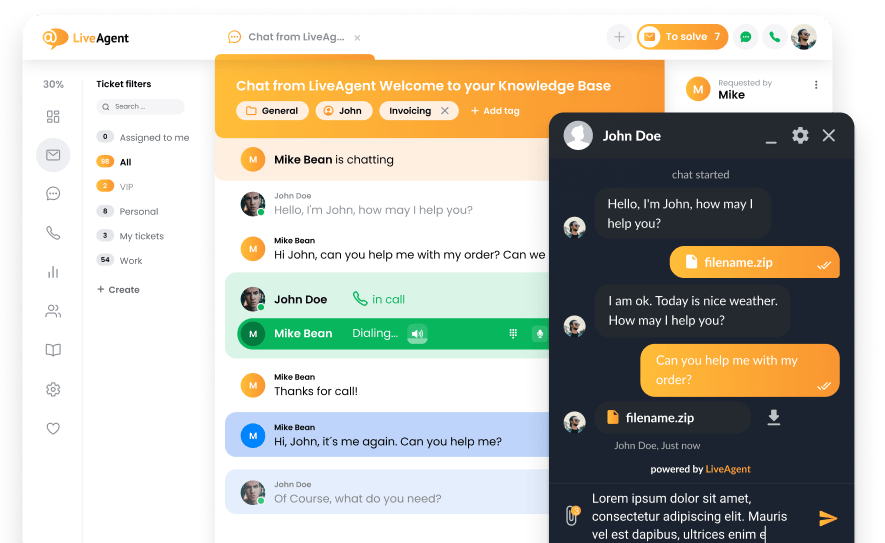Instant messaging apps are all the rave these days. In particular, WhatsApp has been incredibly popular in the field of customer service and client communication in general. In this article, we are going to discuss how we at LiveAgent use WhatsApp to improve communication and enhance the overall customer experience.
Why LiveAgent’s customer support uses WhatsApp
When using WhatsApp, Facebook Messenger, or similar apps, customers have certain expectations when it comes to response rate. Since the nature of the interaction is basically instant messaging, they rightfully expect quicker responses than when using email. On the other hand, most customers understand that the response rate is slower than when communicating via live chat.
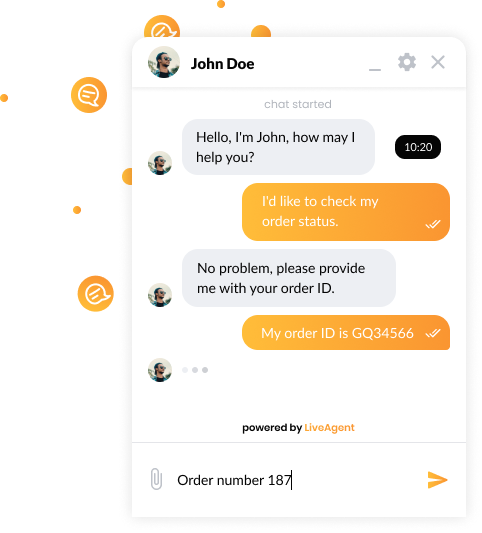
For example, when emailing back and forth with a customer care agent, you have to type out long messages providing as much information as possible. There is a chance that you explain everything on the first attempt, but more often than not, you get an email back requiring a specific detail you didn’t even know could be helpful.
Instant messaging has a very practical purpose when it comes to dealing with customer inquiries. This type of communication allows clients to exchange short messages with partial information with support representatives. Even though the conversation itself can consist of a higher number of messages, they flow more naturally. They are also usually more relaxed, and to many people seem more friendly and approachable.
This very particular way of communicating with customers has to be taken into account when setting up apps like WhatsApp as a new customer support channel.
What are the limitations of the channel?
- Through WhatsApp integration, you can receive and respond to customer messages within 24 hours. However, it is necessary to create WhatsApp message templates if you want to start new conversations or reply to messages after 24 hours.
- A message from the same number (same customer) is always sent to the same ticket (same behavior as the WhatsApp mobile app) unless the old ticket with the previous communication is deleted.
- The page (Start URL) from which they initiated the communication, or from which they got our contact information, is not specified (as in the case of the chat or native contact widget).
Here is how we do things
- Our website has a live chat widget as well as WhatsApp and Facebook Messenger. This way, customers can decide which communication channel they prefer.
- We have integrated separate WhatsApp numbers for different sales departments so customers always know who they are contacting.
- Agents working on chats can now view all tickets created via the WhatsApp channel with just one click on the ticket filter on the ticket screen.
- We have created a separate SLA with 1-hour to respond for both the first and next answer.
- When a WhatsApp ticket is waiting for an answer longer than a few hours, we set a time rule to notify online agents so we can maintain a higher response rate and avoid exceeding the 24-hour limit.
- We have set up the WhatsApp message templates, so in case some tickets reach the 24-hour limit, we can still contact the customer using the predefined and approved template messages. This can be particularly helpful for support that does not have 24/7 coverage as we do.
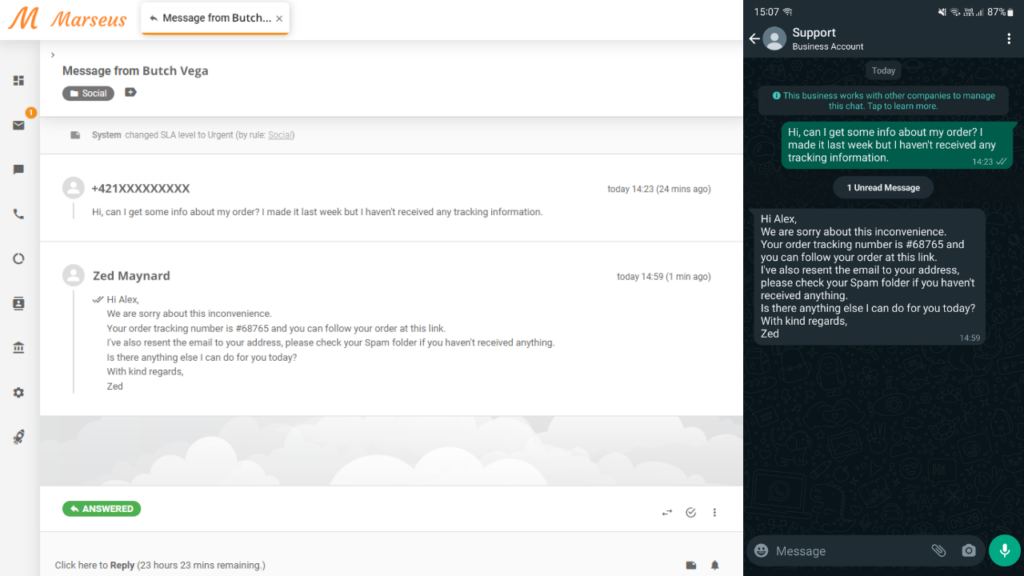
Our process
- Since WhatsApp tickets have a short SLA, they are reaching agents earlier than tickets from other sources. However, when the team is not working on chats, they should pick up WhatsApp tickets using the ticket filter (source=WhatsApp).
- As soon as a WhatsApp ticket is answered, the agent should keep it on the tab, so if the customer responds within a short time, the same agent can write back. As a result, the customer experiences more seamless communication.
Integrate WhatsApp with your help desk and improve response time
Build customer relationships and get a competitive edge with our WhatsApp integration. Try our free 30-day trial today and improve your help desk!
Share this article
How to use WhatsApp for customer service
Are you looking for a way to always stay in touch with your customers? With LiveAgent, you can turn WhatsApp into an excellent customer service channel.
How to use WhatsApp for customer service
WhatsApp is a popular messaging app for customer service. It facilitates powerful customer connections, journey tracking, satisfaction, and loyalty. Integration with help desk software, automation, and surveys are key for successful customer service. Popular businesses like KLM, Adidas, and Booking.com use WhatsApp for customer communication.
Various telecommunications and technology service providers offer a range of services such as virtual PBXs, live video calls, CRM software, cloud services, and call center solutions. LiveAgent's customer support uses WhatsApp for quicker responses and improved communication. The integration offers a smooth and efficient communication experience, centralizing all customer messages in one place. Ready to try out our WhatsApp integration? Let’s improve your customer support together. Get started with LiveAgent today with our free 30-day trial.

 Български
Български  Čeština
Čeština  Dansk
Dansk  Deutsch
Deutsch  Eesti
Eesti  Español
Español  Français
Français  Ελληνικα
Ελληνικα  Hrvatski
Hrvatski  Italiano
Italiano  Latviešu
Latviešu  Lietuviškai
Lietuviškai  Magyar
Magyar  Nederlands
Nederlands  Norsk bokmål
Norsk bokmål  Polski
Polski  Română
Română  Русский
Русский  Slovenčina
Slovenčina  Slovenščina
Slovenščina  简体中文
简体中文  Tagalog
Tagalog  Tiếng Việt
Tiếng Việt  العربية
العربية  Português
Português 